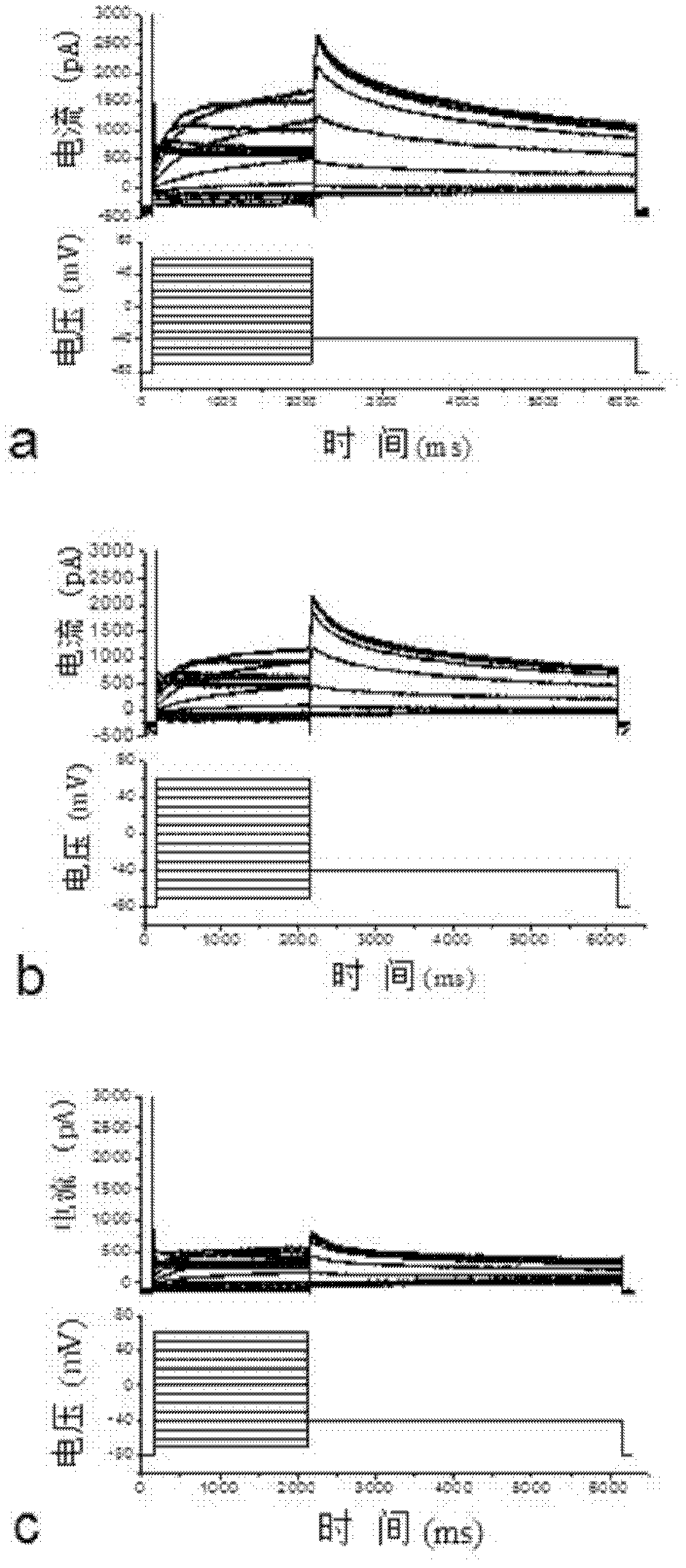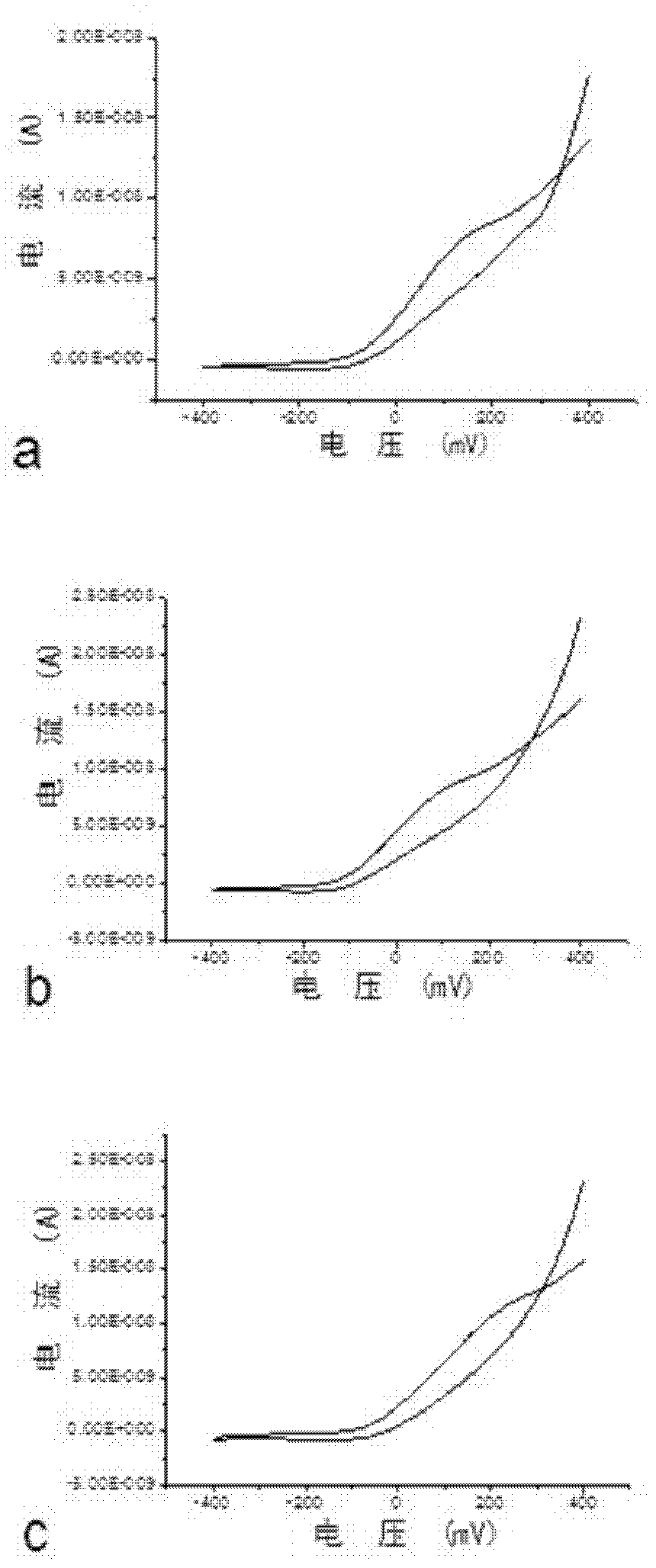Dynamic detection method of potassium ion exchange inside and outside HEK (human embryonic kidney) 293 cell and erythrocyte
A dynamic detection, red blood cell technology, applied in the direction of material electrochemical variables, etc., can solve the problems of cell damage, poor ion selectivity, expensive testing equipment, etc., to achieve the effect of small sample volume, high sensitivity and simple operation
- Summary
- Abstract
- Description
- Claims
- Application Information
AI Technical Summary
Problems solved by technology
Method used
Image
Examples
Embodiment 1
[0033] (1) Nano capillary drawing
[0034] The borosilicate capillary (1.0 mm outer diameter, 0.58 mm inner diameter, L = 10 cm) was used as the material to prepare the nanocapillary, and the parameters (Heat, Filament, Velocity, Delay, Pull) of the pulling instrument (P-2000 Puller) were set, and the drawn capillary , to obtain a capillary with a tip diameter ratio of 2.0. (The length of the capillary is 10 cm, and it is broken from the middle to obtain two nanocapillaries with a tip at one end)
[0035] (2) Hydrophobic treatment of the inner wall of the nanocapillary
[0036] Immerse the nanocapillary tip into the trimethylchlorosilane solution for a while (the capillary effect makes the trimethylchlorosilane enter the capillary), and then use a syringe to slowly push the trimethylchlorosilane into the capillary from the back end of the tube to the end of the tube , so that it reaches the tip of the tube, no air bubbles can remain in the capillary and keep it in the tube f...
Embodiment 2
[0051] The borosilicate capillary (1.0 mm outer diameter, 0.58 mm inner diameter, L = 10 cm) was used as the material to prepare nanocapillary. Short capillary (patch-type). The inner surface of the electrode was hydrophobized, and after the electrode was naturally dried, a small amount of DCE solution containing potassium ionophore was injected through a syringe. Then, the organic phase reference electrode Ag / AgTPBCl was inserted into the capillary tube containing the above-mentioned ionophore, and the tip of the assembled electrode and the reference electrode Ag / AgCl in the aqueous phase were respectively inserted into the red blood cell solution (2 mL 2 % red blood cell suspension) below the liquid level, constitute a two-electrode system, connect the device, and obtain the K inside and outside the red blood cell when it is not processed by nanomaterials through cyclic voltammetry test + The exchanged I-V curve, that is, the blank control. Experiments were performed at ro...
PUM
 Login to View More
Login to View More Abstract
Description
Claims
Application Information
 Login to View More
Login to View More - R&D
- Intellectual Property
- Life Sciences
- Materials
- Tech Scout
- Unparalleled Data Quality
- Higher Quality Content
- 60% Fewer Hallucinations
Browse by: Latest US Patents, China's latest patents, Technical Efficacy Thesaurus, Application Domain, Technology Topic, Popular Technical Reports.
© 2025 PatSnap. All rights reserved.Legal|Privacy policy|Modern Slavery Act Transparency Statement|Sitemap|About US| Contact US: help@patsnap.com



